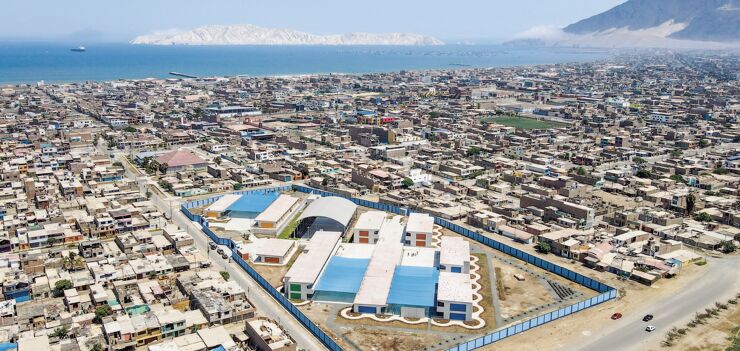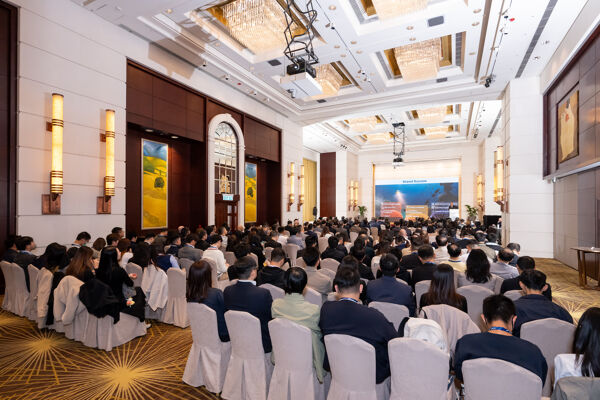
NEC contracts are being used to procure £2.8 billion of infrastructure reconstruction in Peru following significant flood and landslide damage caused by extreme rainfall during the 2017 El Niño climate oscillation.
In 2020, the Peruvian government set up Autoridad Para la Reconstrucción con Cambios (ARCC) in an executor role to deliver the so-called ‘reconstruction with changes’ programme using NEC contracts.
The work includes rebuilding 74 schools and 15 healthcare facilities, plus carrying out flood defence works on 17 rivers across the country.
UK delivery team
In July 2020 ARCC engaged a joint venture of the UK Department for International Trade (DIT), Mace, Arup and Gleeds as its programme delivery partner. Known as the UK Delivery Team (UKDT), the joint venture is also helping to transform how Peru delivers public-sector capital works by sharing best practice through a knowledge transfer framework.
A similar NEC-based arrangement was used between 2017 and 2019 to deliver £400 million of new and upgraded venues and facilities for the Lima 2019 XVIII Pan American and Parapan American Games (see Issue 103).
In the first year since starting work in mid-2021, ARCC has awarded 26 NEC contracts for 116 projects and procured £1.3 billion of work. Main contractors have been engaged under the NEC3 Professional Services Contract (PSC) while works have been let using the NEC3 Engineering and Construction Contract (ECC) Options A (priced contract with activity schedule), B (priced contract with bill of quantities) and F (management contract).
In recognition of its outstanding achievements, ARCC won the 2022 NEC Client of the Year Award.
Collaborative working
Programme management office director Eduardo Canales says a key objective of the programme is to use NEC contracts to achieve efficient procurement and collaborative working.
‘Our success is evidenced by the fact that we are now the most productive government entity in Peru, accounting for nearly 27% of the country’s budget in the first quarter of 2022. We credit this achievement, in part, to the use of NEC on this programme and across the supply chain.’
The programme’s success so far has encouraged other government departments such as education and finance to look at how to replicate the ARCC’s model and incorporate NEC into their own construction programmes.
A knowledge transfer programme is being used to share the skills needed to implement NEC contracts to everyone associated with the programme. ‘Our internal teams and the supply chain were trained to administer NEC contracts, allowing us to create an environment where collaborative contracting is becoming the norm,’ says Canales.
‘To-date, we have given over 11,800 hours of training to nearly 1,300 professionals to improve their understanding of NEC and build the required “mutual trust and co-operation” between all parties.’
Inspiring confidence
He says the fairness of NEC contracts has also inspired confidence in the market and helped improve participation in ARCC’s procurement.
‘We have improved engagement with local companies and increased international participation. Consequently, we have successfully increased the number of tenderers for each project from an average of two to 22. We have also reduced average public procurement process time from 12 to three or four months without compromising the integrity of the process, setting new standards in the country.’
Canales says NEC contractual processes have played a crucial role in the programme’s success. ‘The NEC early warning mechanism has helped minimise disruption of works and promoted proactive risk management, while the compensation event approach has driven collaborative management of change, enabling proactive cost management and shifting away from the practice of last-minute contract changes.
‘And, in a country where nearly 85% of projects end up in courts, our NEC dispute avoidance board has helped in swifter voluntary resolution of issues.’
He concludes, ‘While this is just the start, we will continue championing NEC on this programme and on all future capital endeavours in Peru.
Benefits of using NEC
- NEC fairness has inspired confidence in the market and improved the number of tenderers for each project from an average of two to 22.
- NEC requirement to act in a, ‘spirit of mutual trust and co-operation,’ has helped to build collaborative working relationships between all parties on each project.
- NEC early warning mechanism has helped to minimise disruption of works and promoted proactive risk management.
- NEC compensation event approach has driven collaborative management of change, enabling proactive cost management.
- NEC dispute avoidance board has helped in swifter voluntary resolution of issues.




